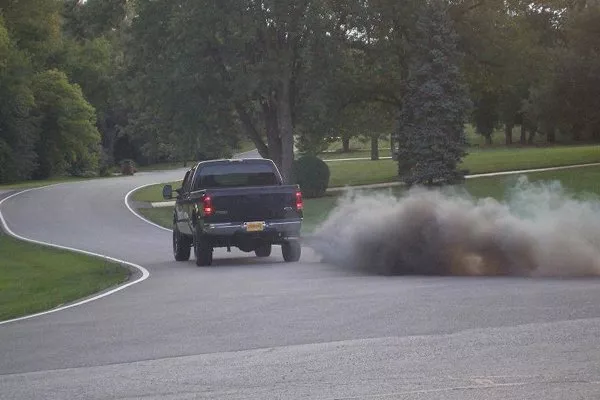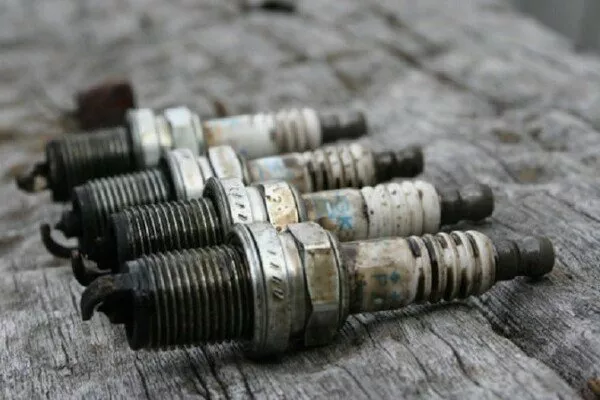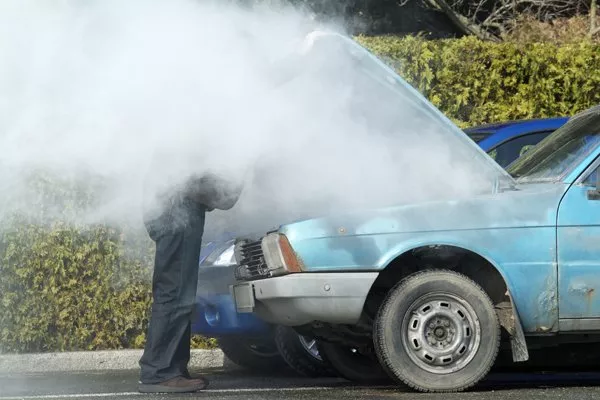Fuel Pressure Regulator: Function
For your car to work, different elements come to play such as pressure and temperature. These two elements are constantly changing as you operate your car so you can achieve your desired speed. One of the systems that are heavily affected by pressure is your car’s fuel injection system.
Without adequate pressure, your car’s fuel system will not deliver the right amount of fuel to the intake manifold. This causes your car to lose power and will likely wear your car’s engine components faster. To operate with the right amount of pressure, a fuel pressure regulator is used.
![A fuel pressure regulator [Photo: CarCare Hunt] Red fuel pressure regulator](https://img.philkotse.com/temp/2024/07/27/fuel-pressure-regulator-1-6ceb-918b.webp)
A fuel pressure regulator [Photo: CarCare Hunt]
The purpose of a fuel pressure regulator is to maintain a steady supply of fuel to the intake manifold. Fuel is sucked out from the fuel tank using a pump into the fuel rail. A fuel rail houses the fuel injectors that are connected to the intake manifold. After the fuel rail, the fuels proceed to the fuel pressure regulator and back to the fuel tank.
A fuel pressure regulator is fitted with a vacuum line that is linked to the intake manifold. The vacuum line is what tells the fuel pressure regulator how much pressure is needed for an ideal fuel operation depending on how much you step on the gas pedal.

Fuel pressure regulators are essential in keeping a good engine operation
To monitor the pressure in your car’s fuel pressure regulator, you can install a fuel pressure gauge inside your car. You will likely see a fuel pressure gauge in high-performance vehicles that are heavily modded. Plus, a fuel pressure gauge adds sporty aesthetics inside your car if that is your style.
How to install a fuel pressure regulator (FPR)
>>> Related: 7 reasons why fuel systems don’t need additive or adjustments
Fuel Pressure Regulator: Pros and Cons
Pros
A fuel pressure regulator has a lot of advantages as it is essential to keep the fuel flowing. Without it, your car could be running either rich or lean. Both said fuel/air ratios are terrible for your car that can result in inefficient engine operation.
The ideal ratio for optimum operation is 14.7:1, meaning 14.7 grams of air to 1 gram of fuel. Running rich means that your car is burning more fuel than it should be. This will cause your car to run with a bad fuel efficiency which will require you to gas up more often.

A good fuel pressure regulator helps you save money for parts replacement
On the contrary, running lean will cause your car to provide a bad throttle response. Since metals are rubbing against each other for engine operation, a lean and dry fuel/air mixture will cause overheating. The worst that can happen is your pistons will not provide enough power to keep the engine cranking.
With that being said, a good fuel pressure regulator should be installed at all times. One of the most common pros in installing a fuel pressure regulator is the good fuel efficiency rating it brings to your car. This will help you save money on gas in the long run and can help you go farther distances.

Part of a good fuel system is a maintained fuel filter
Another pro of installing a fuel pressure regulator is that it can help prolong your car’s components. Spark plugs are commonly affected if the fuel/air mixture is poor. With a fuel pressure regulator, you can save on replacement costs for spark plugs and other engine components.
>>> Related:
- What’s the price of replacing a fuel pump in the Philippines?
- Why does my car consume more fuel than advertised? [Newbie Guide]
Cons
A carburated vehicle can run without a fuel pressure regulator as it uses a low-pressure system. Fuel is sucked into the fuel chamber using the Venturi effect. The only downside of cars without a fuel pressure regulator is that they are not as fuel-efficient, theoretically speaking, as those with one.

Avoid overheating by installing a good fuel pressure regulator
However, there are still car owners who decide to install a fuel pressure regulator for their carbureted vehicles. Fuel pressure regulators that are designed for carbureted vehicles are low-pressure units so these can still operate in an ideal manner.
For cars with electronic fuel injection (EFI) system, fuel pressure regulators are usually built-in. But for carbureted vehicles, this type of fuel system can still be installed with an aftermarket fuel pressure regulator. So if you are thinking of installing a fuel pressure regulator in your car, we have listed down steps you can do to install it properly.
Fuel Pressure Regulator: Installation Guide
- Grab the necessary tools and equipment needed for installing a fuel pressure regulator. You will need your chosen fuel pressure regulator, wrenches, and teflon tape.
- Thread all the fittings needed for the fuel in and fuel out using a teflon tape. To do this, wrap a teflon tape around the threads of your fittings before tightening them using wrenches.
- Find an area where you can install your fuel pressure regulator in the engine bay. Install it where you can still read the pressure regulator gauge to make adjustments if needed.
- Your fuel pressure regulator should be connected in between your car’s fuel pump and carburetor. This way, it will regulate the pressure properly. If you chose a bypass fuel pressure regulator, then link it back to the fuel tank so it can bleed off excess fuel.
Installing a fuel pressure regulator: FAQs
1. What is the ideal fuel/air mixture ratio?
The ideal fuel/air mixture ratio is 14.7:1. This means that the mixture should have 14.7 grams of air and 1 gram of fuel.
2. What can a fuel pressure regulator do?
A fuel pressure regulator helps supply an adequate amount of fuel to the intake manifold by regulating the pressure.
3. Do fuel pressure regulators last for a long time?
Yes, fuel pressure regulators last for almost the lifetime of a car.
4. What happens if my car runs rich?
If your car runs rich, then it will burn more fuel than it should be. This will result in poor fuel consumption and a bad throttle response.
5. Do carbureted vehicles use a fuel pressure regulator?
No, carbureted vehicles generally don’t use a fuel pressure regulator as they can run without it. Cars with an electronic fuel injection (EFI) system use a fuel pressure regulator for supplying fuel to the intake manifold.
Here at Philkotse.com, we value your interest in the automotive industry. Visit our website to find out more.
Recent posts
- what is oil catch can purposes benefits pros cons Feb 17, 2021
- body lift vs suspension lift pros cons Mar 10, 2022
- 4-cylinder and 6-cylinder Engines Jan 18, 2021
- Top 5 most fuel-efficient diesel pickup trucks available in the Philippines Oct 18, 2022
- 5 Different Types of Fuels in the Philippines: Pros & cons Jan 26, 2021











